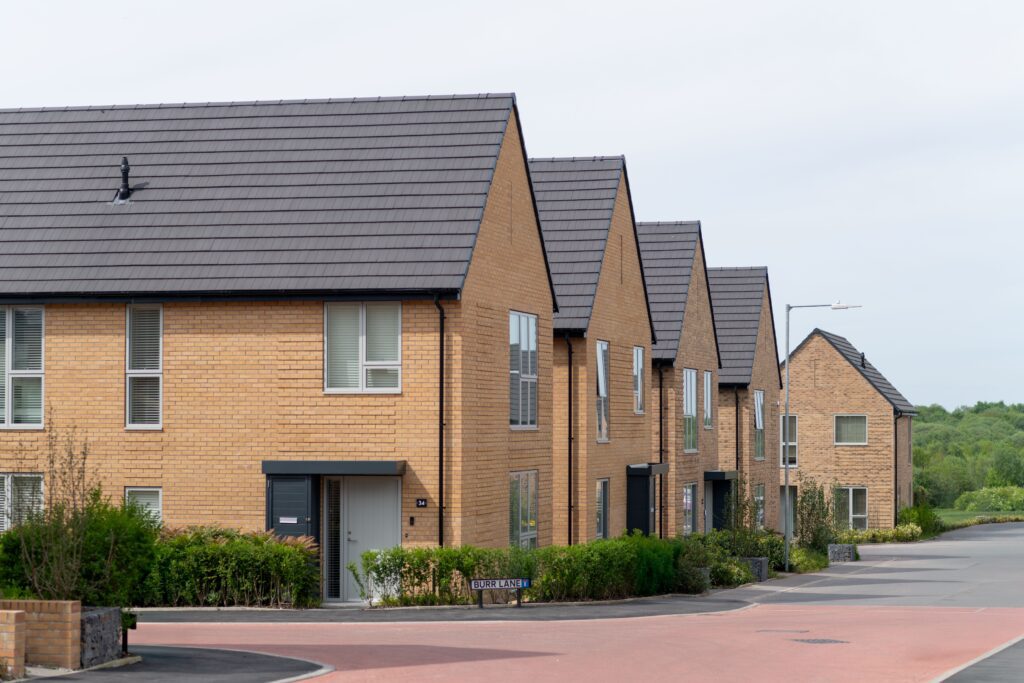Managing Editor Rebecca Spayne observes that homeowners are increasingly seeking exteriors that encourage biodiversity, as well as smart, multifunctional areas
Creating appealing, inviting, and unique outdoor spaces in new-builds presents a significant challenge for housebuilders. As homeowners increasingly seek gardens that offer more than just aesthetic appeal, the pressure is on to design spaces that provide functionality, sustainability, and a personal touch. In this article, we explore the latest trends that are transforming new-build gardens in 2024. From eco-friendly designs and multifunctional spaces to the integration of smart technology and low-maintenance landscaping, we will discover how these trends can help housebuilders craft distinctive gardens that stand out and meet the evolving desires of today’s homeowners.
Sustainable Landscaping
Sustainability has become a key consideration for homeowners and new-build gardens are increasingly reflecting this trend. Housebuilders are now prioritising eco-friendly designs that not only reduce environmental impact but also promote biodiversity and conservation.
One of the most effective strategies for creating a sustainable garden is incorporating native plant species. These plants are adapted to the local climate and soil conditions, requiring less water and maintenance. Native plants also provide essential habitats for local wildlife, promoting biodiversity. As homeowners become more environmentally conscious, the demand for native plants has surged.
An additional benefit to native species is that they support local ecosystems and reduce the need for chemical fertilisers and pesticides. Jonathan Hill, Sales and Marketing Director at Rolawn, recognises this trend: “We are seeing a growing demand for more habitats within landscape designs to encourage more diverse and species-rich outdoor spaces. With biodiversity net gain targets coming into effect earlier this year for new planning permissions, developers are seeking ways to meet the new regulations.”
In addition to promoting biodiversity and water conservation, sustainable garden designs must also address rainwater and surface runoff management. Housebuilders are increasingly integrating features such as rainwater harvesting systems, permeable paving and drought-tolerant plants. Installing rainwater collection systems can significantly reduce a garden’s water footprint. Collected rainwater can then be used for irrigation, reducing reliance on mains water and lowering utility bills for homeowners. Jonathan Hill explains, “Managing rainwater and surface runoff is rapidly becoming the key issue for local planning authorities. This means all developers are going to need to address the four pillars of sustainable drainage systems more dynamically as Schedule 3 legislation becomes mandatory in England later in 2024 or early 2025.”
Another innovative approach to creating greener, more biodiverse outdoor spaces is the incorporation of green roofs and living walls. These features have become increasingly popular in developments due to their aesthetic appeal and environmental benefits. Green roofs and living walls help regulate building temperatures, reduce stormwater runoff and improve air quality. They are particularly advantageous for new-builds in urban areas where space is limited, providing insulation, lowering temparatures in hotter months and creating pockets of greenery in densely built environments.
By integrating these eco-friendly features, housebuilders and homeowners can contribute significantly to environmental conservation while enhancing the beauty and functionality of their properties. Jonathan Hill emphasises the importance of these sustainable practices: “Our consultation and project planning services conducted under our Bioscapes brand help developers, landscape architects and designers exceed their sustainability and biodiversity requirements through the correct use of our SuDS planters and biodiversity units.”










